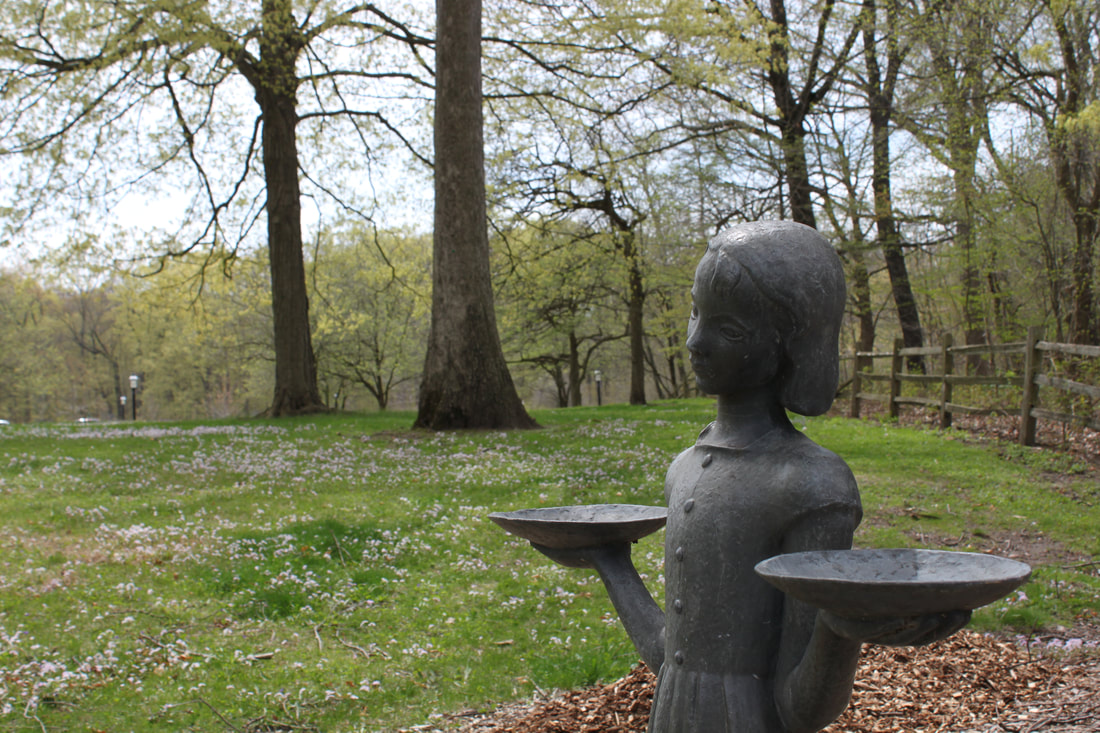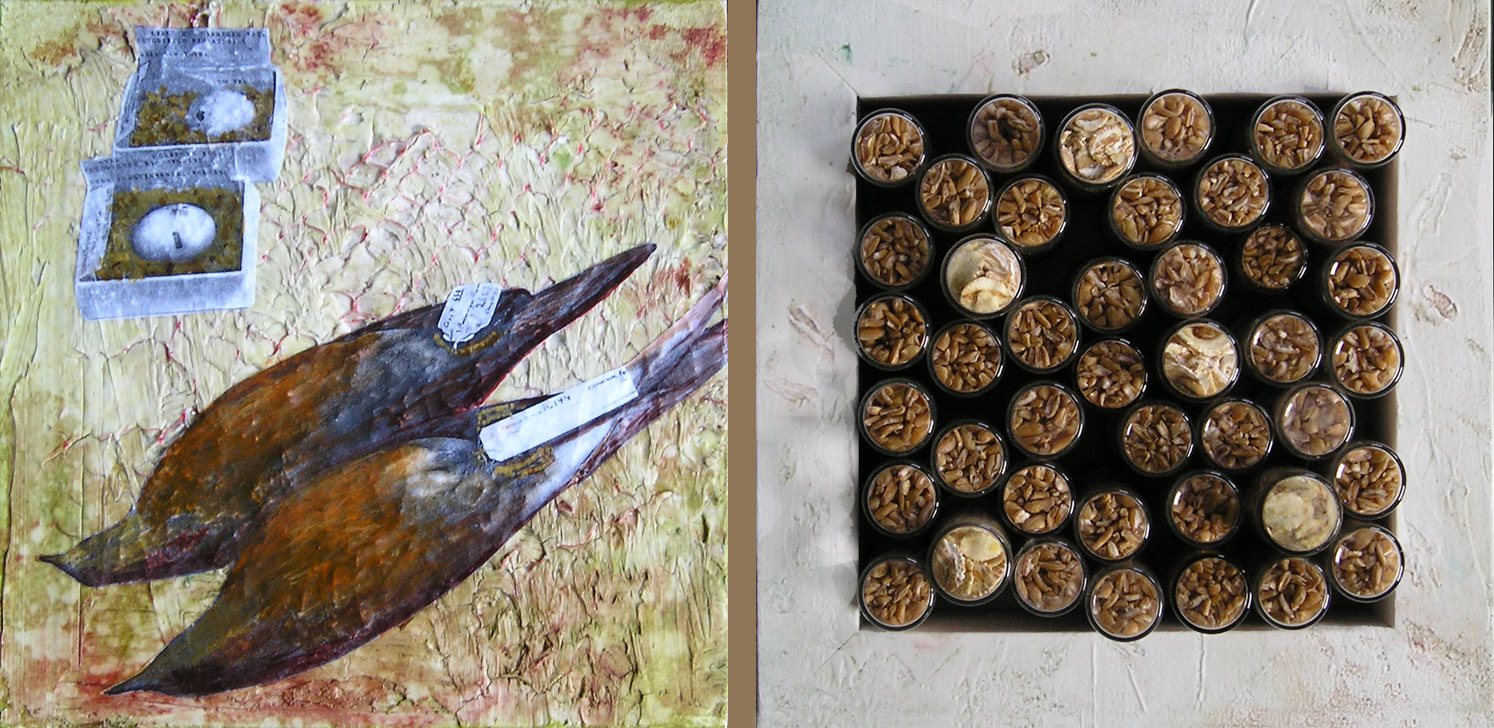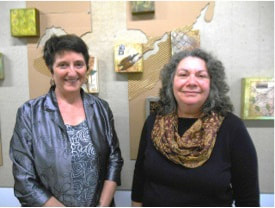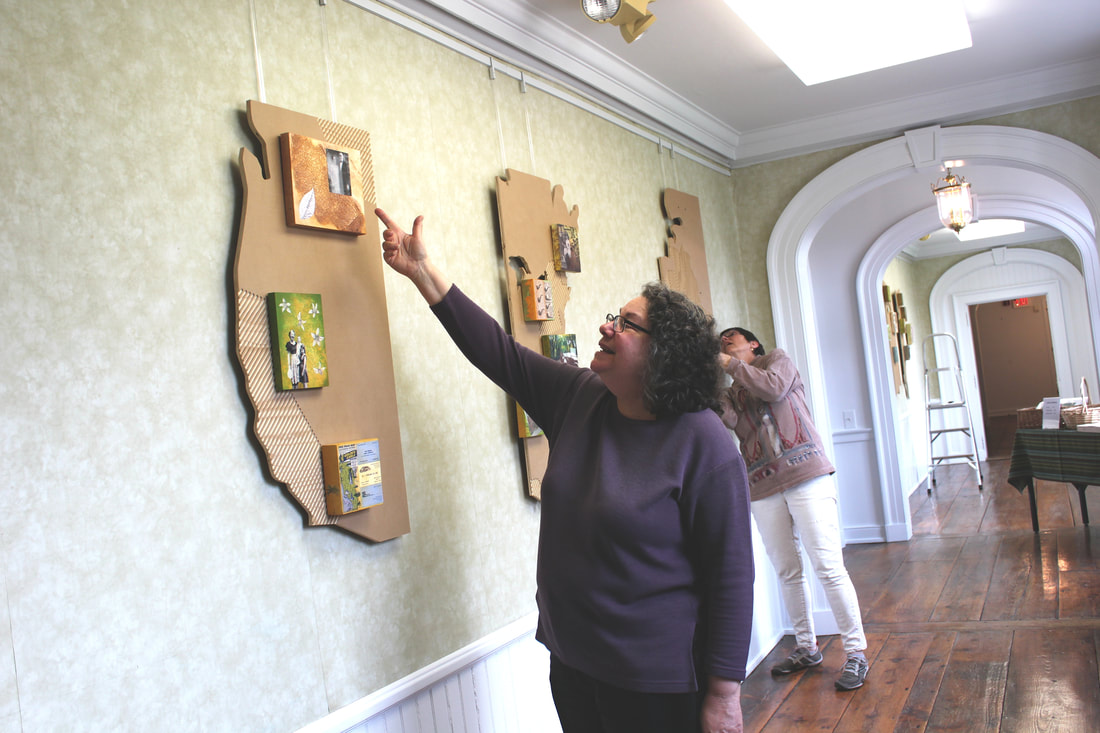|
by Luke Buckardt The emergence of Wild Leeks (Allium tricoccum) in early April provides some of the first signs of green at Ryerson Woods in spring.[/caption]After some rain and a few warm days, the forest floor began its push to beat the leaves. Spring ephemerals must take advantage of the slim margin of time between when it is warm enough to flower and when the leaves pop, cutting off light to the forest floor. This two to three week period is perhaps the most active time of year for the forest floor, where hundreds of species quickly take advantage of sunlight in order to reproduce. The leaf litter is suddenly changed from decay into a vivid carpet of green. The flowering species have a very short time to reproduce and take advantage of pollinators. Historically, this brief period every year was essential for Native Americans and early settlers. The plants that grew were harvested for food and medicine, as well as many other resources. Following the phenology of bloom is something scientists are fascinated by, and in recognizing these patterns, can determine the many uses of these spring ephemerals. Perhaps the most common plant in Ryerson right now is the Wild Leek (Allium tricoccum), which can be seen in many of the wet areas of the preserve. The Wild Leek, a type of onion, is a member of the lily family. It, however, is unusual in the sense that it does not flower during this crucial time before trees leaf out. The leek flowers in late June. Leek is touted as a savory flavor, perhaps the most delicious of all of the native wild onions. Settlers used the strong odor of the leek to cover the taste of spoiled food. They have been used for centuries for food, but they were also thought to have some medicinal properties. Chippewa tribes used it as a cure for the common cold, and also as an emetic, or something that forces vomiting. Trout Lily (Erythromium albidum) is currently in bloom at Ryerson Woods.[/caption]Another common plant right now at Ryerson is the Trout Lily. Trout lily (Erythromium albidum) is an abundant plant on throughout the floor, and can be seen flowering right now. The flower opens downward, so to get a good look at it one must get low to the ground. Trout lilies are fascinating flowers for a few reasons. Most surprisingly, they are colonial. A large swath of these flowers may actually be one individual plant. The bulbs extent stems throughout the soil, and each year add growth from one initial bulb. The flower gets its name due to the leaf spots present, which look very similar to the spots on a trout. The flowers are open until they are fertilized by insects, and then whither away within a few days. The trout lily is very interesting in that the flower is very sensitive to temperature. In order to maximize the potential for pollination, it will not open until the air temperature is 55 degrees. This, according to the plant, is the right temperature for insect activity to be abundant, and therefore giving it a better chance at pollination. Historically, this plant has been used for food as well as medicine. Sioux tribes ate the bulbs, as they are high in nutrients. Some of the first botanical literature cited the medical uses of the plant as a cure for gout, as well as a treatment for boils upon the skin. Trout lilies are beautiful, and their colonies in some parts of the forest take up much of the current forest floor. Perhaps one of the most well known spring ephemerals in the eastern forests is the Mayapple. The Mayapple (Podophyllum peltatum) grows in every section of Ryerson Woods and can be easily located by their large, umbrella-like leaves. The Latin name comes from the Greek word “podos”, or foot and “phyllon”, or leaf. Early taxonomists believed the leaf resembled the webbed foot of a duck. Mayapples are also colonial, and reproduced via rhizomes underground. This is the reason you will see large “stands” of Mayapple in different parts of the forest. The plant blooms in early to mid May, and has a large white flower attached to the stalk under the large leaf. The flower is quickly pollinated, and the plant stays on the forest floor for up to three months while the fruit ripens. The unripe fruit has a toxic resinoid in it called Podophyllum, and can be lethal to children or adults if consumed in large quantities. However, these are no longer present once the fruit ripens and can be eaten. It is said that they taste like strawberries. The fruit was consumed by many woodland tribes, but also used in the unripe state as a purgative or emetic. The Delaware tribe also used the unripe fruit to treat arthritis. This blog post was written by Luke Buckardt, who assists Brushwood Center with social media. Luke graduated from Northland College in 2012 with a degree in biology. He grew up in Riverwoods and has roamed Ryerson Woods since he was young, knowing the preserve intimately.
0 Comments
Art exhibition linking passenger pigeon and Jewish heritage comes to Ryerson Woods MOVING TARGETSOPENING: Sunday, May 4 from 1:00 – 3:00 p.m. RUNS: May 4 – July 3, 2014 Artists and friends Steffi Domike and Ann T. Rosenthal often focus on environmental issues in their work, sometimes weaving bird imagery into their pieces. Both also have traced the history of their Jewish ancestors from Ukraine. Now the artists have created a unique exhibition that links their heritage and environmental ethics. Moving Targets will open May 4 at Brushwood Center at Ryerson Woods. A free reception will be held from 1 to 3 p.m. Using digital media, painting and layering techniques, the artists will install collages, wood box paintings, maps and photos to tell the story of migration, loss and survival. The exhibition weaves the story of their ancestors’ migration from Ukraine to Canada with the migration of the now extinct passenger pigeons in the United States. With help from historian Ruth Fichman, the artists learned about their ancestors who left the Ukraine circa 1910 to escape anti-Semitism and pogroms (organized massacres, especially of Jews). “As part of Moving Targets, Steffi and I are each creating a visual journal that will interpret the story of our mothers’ families, along with the migration of passenger pigeons in the United States,” said Rosenthal.
In addition to exhibiting their own work, the artists have invited 14 artists from states where the passenger pigeon formerly lived to create a portrait gallery in Brushwood. Each artist is using wooden birch boxes upon which they will create their work whether it be through collage, photography or painting. “One of our submissions is the ghost of the passenger pigeon, another is a formal portrait, another one is a half dozen birds flying madly as though in a large flock,” Domike said. “They are absolutely beautiful." They said their inspiration for creating the exhibition came from Joel Greenberg, author of A Feathered River Across the Sky: The Passenger Pigeon's Flight to Extinction. Greenberg will receive a conservation award at the Smith Nature Symposium to be held May 17 at Ryerson Woods. Symposium attendees will be able to browse the Moving Targets exhibition during the Symposium. The Smith Nature Symposium is an annual benefit event for Brushwood Center at Ryerson Woods. This year will mark the Symposium's 31st year of bringing luminaries in the fields of science and conservation to the citizens of Lake County. The 2014 Symposium is part of a year- long exploration of the theme extinction | survival. Key sponsors are Abbott and Bartlett Tree Experts. Greenberg’s book and Rosenthal and Domike’s exhibition are part of an international effort to familiarize as many people as possible with the history of the passenger pigeon and its extinction as well as to raise awareness of how the issue of extinction is ecologically, culturally, and morally relevant to the 21st Century. Domike and Rosenthal have been collaborating on environmentally themed artworks for more than a decade, exhibiting throughout the U.S., Japan and Germany. The exhibition runs through July 3, 2014. The exhibition is part of the extinction | survival series of public programs being offered by Brushwood Center over the course of 2014. The series seeks to promote a broader understanding of extinction and species survival. We’re exploring why extinction happened in the past and why it continues today, as well as celebrating stories of species survival. Programs include book talks, art exhibitions, lectures and film screenings that will run throughout 2014.
|
AuthorThis blog is written by the staff and partners of Brushwood Center at Ryerson Woods Archives
February 2022
Categories |
|
21850 N. Riverwoods Rd.
Riverwoods, IL 60015 224.633.2424 [email protected] ABOUT BRUSHWOOD BECOME A PARTNER VOLUNTEER AND JOB OPPORTUNITIES |
Brushwood Center at Ryerson Woods is committed to enabling the participation and enjoyment of our programming and events for all visitors. At Brushwood Center, you will have open access to accessible parking and entrance to the house, a gender neutral bathroom, and changing tables.
If you require certain accommodations in order to observe or attend our events, or have questions regarding accessibility of our facilities, please contact our Director of Public Programs and Music, Parker Nelson, at [email protected] or at (224) 633-2424 ext. 1. Programming and events at Brushwood Center are available to everyone, including but not limited to age, disability, gender, marital status, national origin, race, religion, and sexual orientation. Site Photography by: In Life Photography, Michael Kardas Photography, Ewa Pasek Photography, Brushwood Staff, and Josiah Shaw Productions |
OPEN TO THE PUBLIC Monday - Thursday & Saturday: 10am - 3pm Sunday: 1pm - 3pm and by appointment |




 RSS Feed
RSS Feed
